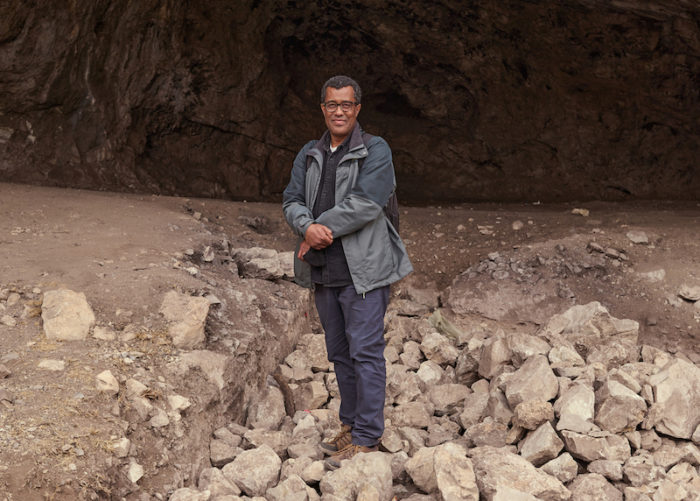VSThis discovery helps to understand how Paleolithic human groups shifted towards agropastoralism, during a long period of transition that is still poorly understood.
It shows that “the new ways of life that appeared in the Neolithic are more the result of a connection than of a break”, told AFP Abdeljalil Bouzouggar, director of the National Institute of Archeology and Heritage Sciences (Insap) in Rabat, co-author of the work.
“It is generally accepted that hunter-gatherers consumed large quantities of meat until the advent of agriculture, and that it was only then that they began to exploit plant resources.”, explains Zineb Moubtahij, lead author of the study published in Nature Ecology & Evolution.
“One of the oldest cemeteries in Africa”
But the analysis of prehistoric burials in Morocco suggests a completely different scenario for hunter-gatherers of the so-called Iberomaurusian culture, which developed in what is now the Maghreb between 25,000 and 10,000 years before the present.
Between -15,000 and -13,000 years ago, one of these communities occupied the Pigeon Cave in Taforalt, in northeastern Morocco. “One of the oldest cemeteries in Africa”, specifies Zineb Moubtahij, doctoral student in archeology at the CNRS, who carried out her research at the Max Planck Institute in Germany.


Started at the end of the 1940s, excavations of this site of several archaeological levels have brought to light “82,000-year-old shell ornaments, one of the oldest trephined skulls, the oldest fossil DNA in Africa…”, lists Abdeljalil Bouzouggar.
And a burial containing human remains, directly dated between 15,077 and 13,892 years before the present. In 2014, the study of their teeth revealed traces of cavities. “A pathology which develops with a diet rich in carbohydrates (contained in certain plants, editor’s note), characteristic of Neolithic populations”, underlines the professor of Prehistory.
The find therefore arouses the suspicions of scientists because it assumes a lifestyle similar to that of sedentary agropastoral groups, the first traces of which in North Africa only appeared around 7,600 years before the present.
To find out how they ate, the researchers analyzed the teeth of seven individuals with a new method for studying isotopes including those of zinc, a metal obtained from food and recorded in dental enamel. This technique allows “to estimate the consumption of meat and plant resources”, specifies Zineb Moubtahij. They then made comparisons with remains of canids, exclusively carnivorous, found on site.
The results concluded that the community had a predominantly plant-based diet. Analysis of babies’ teeth and bones also revealed weaning from animal proteins before one year of age, a particularly early age for hunter-gatherers.
Their diet consisted of beans, lentils and wild oats and oak acorns, charred remains of which had been identified in the cave — in less quantity than animal bones, because they preserve less well. Plant resources that they picked, then cooked. “When cooked, acorns become floury and stick to teeth, which can cause cavities.”, notes Zineb Moubtahij.
Another sign of a new way of life: the presence of traces of esparto, an inedible plant still used today to make baskets, suggesting transport and storage of foodstuffs, adds Professor Bouzouggar. Scientists imagine a semi-sedentary population, occupying the Pigeon Cave most of the time, which would have transformed its diet to adapt to a change in environment.
The study puts forward the hypothesis of an impoverishment of the local fauna, in particular of the Barbary sheep which were then heavily exploited, which would have led to the consumption of plants, more than 7000 years before the domestication of plants and animals.
Such an early change in diet had already been identified among Natufian hunter-gatherers in the Near East, where the Neolithic began. A population also genetically close to the Iberomaurusians.





